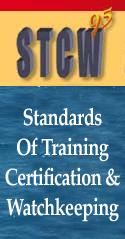
STCW training or Standards of Training, Certification and Watchkeeping Convention refers to a set of regulations or guidelines governing training of seafarers and was first drafted in the year 1978. As we know that seafaring is one of the oldest professions and sailors are perhaps as aged as marine animals (bit of pun intended). On a more serious note, the marine profession did lack a uniform set of training standards despite being a widely adopted profession.

This lack of training obviously led to lot of malpractices at sea on board ships such as lengthy work hours, exploitation of seafarers, conflicting rules and laws in case of marine accidents and so forth. Each nation had its own set of rules which were not in tune in other similar regulations of different countries. This led to a chaotic situation and made the otherwise beautiful oceans, a dangerous place to work for seafarers.
It was in this background that the United States came up with a set of regulations known as STCW 78 which was mainly meant for implementation within its own wing of the US Coast Guards. This is how the STCW convention was born and led to the adoption of STCW training standards later on.
STCW 1995
It was nearly two decades after the STCW training standards laid down by STCW convention that the USCG government decided to approach the IMO or the International Maritime Organization to make these uniformly applicable to all member nations. This led to the formation of the STCW code in the year 1995.
A major change in the STCW training standards of 1995 was the requirement of a separate certificate of competency issues by appropriate authority to certify that the seafarer was capable of performing the required work with a certain minimum level of competence.
One incident which played a major role in the proposal of the USCG to IMO and its subsequent acceptance was the grounding of a ship named M/V Aegean Sea near the coast of Spain. After this the IMO formed the special Maritime Safety Committee and to review to the 1978 STCW convention and the rest as they say, is history.
Sailors are human beings (despite the common perception that there are three kinds of human beings – man, woman and seaman), so are subject to exhaustion and get tired also. Hence proper certification is not the only way to ensure lesser accidents and a safe working environment. Rather the work hours and other work related issues have to be sorted out. This is also taken care of under the STCW convention.
Today nearly all seafaring nations are member of the STCW convention and about 97 percent of total world tonnage comes under its purview.
In the subsequent articles we will also learn about various certificates for the engineering side, deck side and other related areas and other related information relating to STCW training and certification.
The image below shows a fire fighting training scenario conducted as per requirements of STCW convention. We will study about various such courses such as basic fire fighting, survival at sea etc during our studies.







